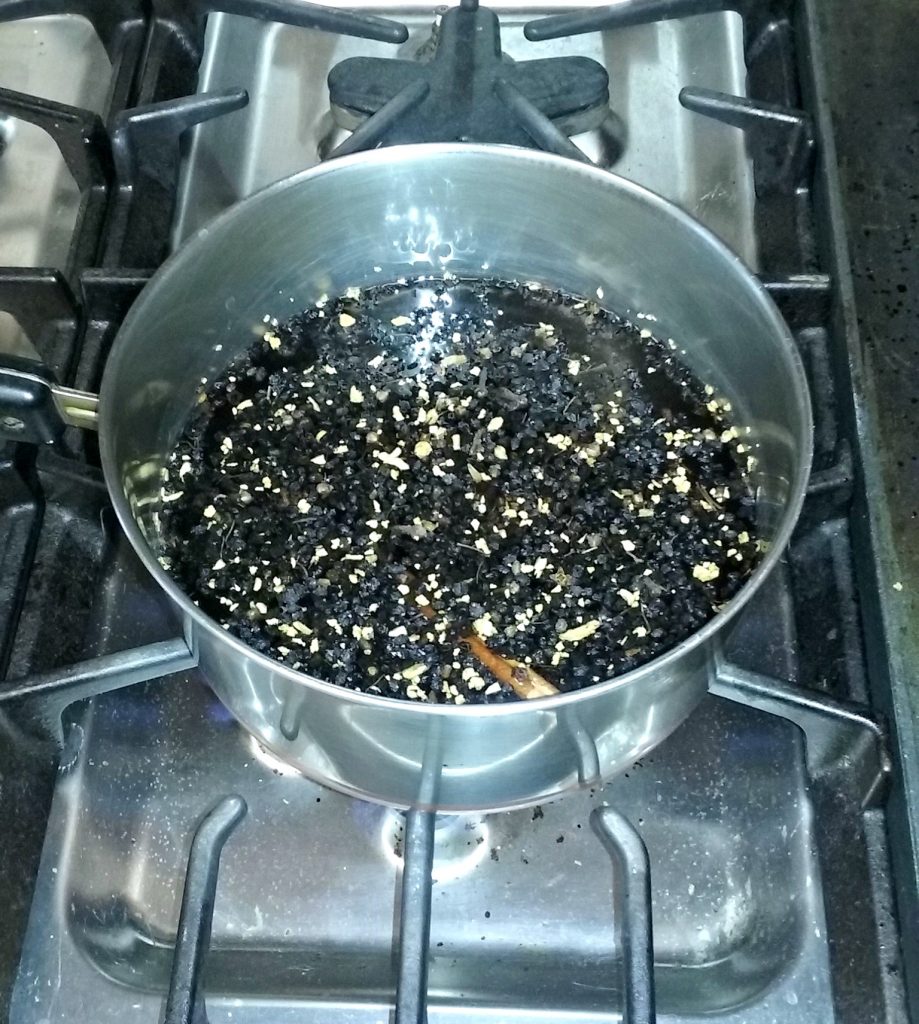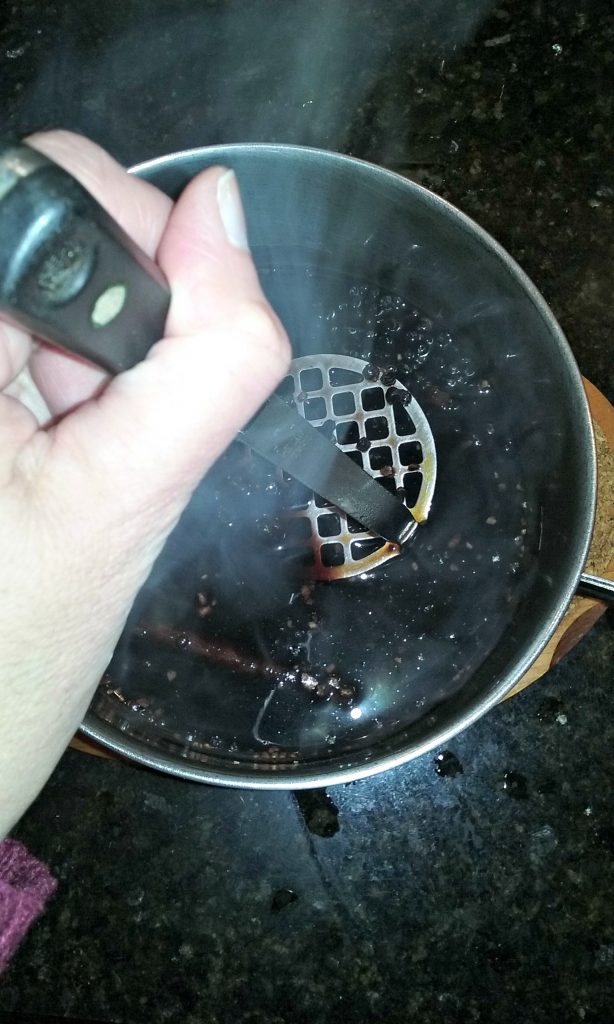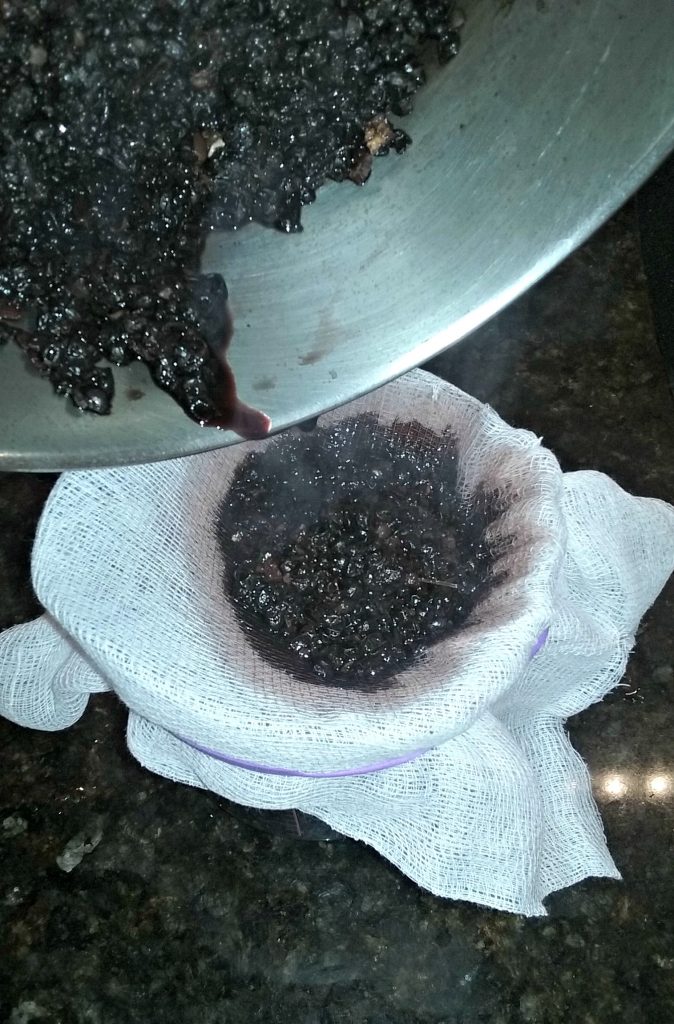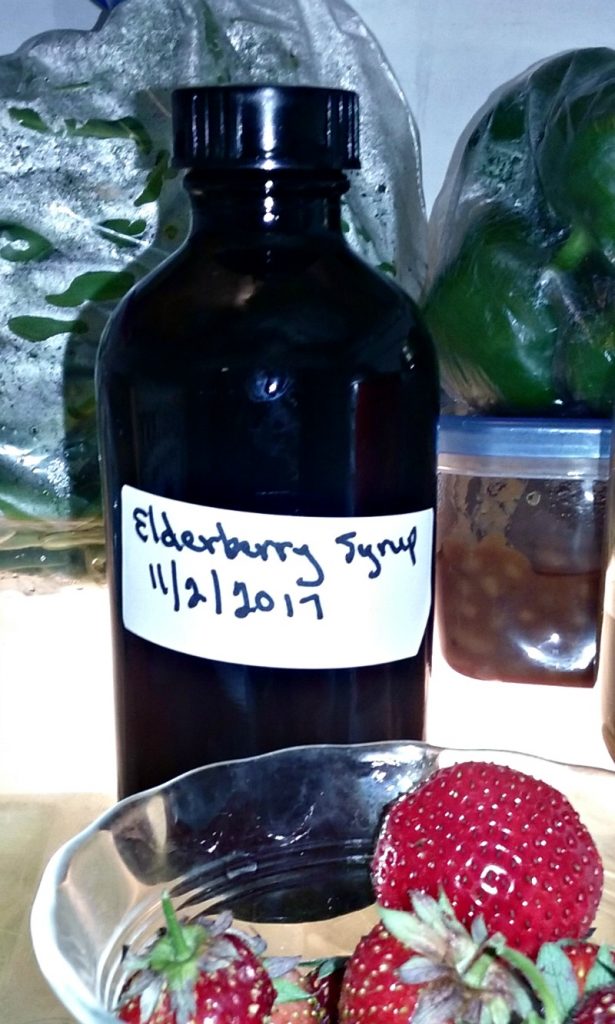I made my first batch of elderberry syrup from a kit purchased from my friend Beth, who owns and runs Long Ears Herbs, an herb farm and craft business in Pamplin, Virginia. Beth sells her kits locally at farmer’s markets, craft fairs and the like. If you can, buy your kit from Beth. It contains everything to make a batch of elderberry syrup.
However, if you aren’t from my local part of central Virginia, and you need to make it yourself, you can purchase dried elderberries at a health food store or an online marketplace such as Amazon. Online marketplaces and health food stores also sell prepared elderberry syrup, which you can purchase instead of making it yourself.
To make elderberry syrup, you’ll need:
- 2/3 to 1 cup of dried elderberries.
- 1-2 cinnamon sticks
- 1 tablespoon fresh or dried ginger root
- 1/2 cup raw honey
- 3 1/2 cups of water
- A pot to boil the water
- A clean bottle with stopper to store your syrup in the refrigerator
- Cheesecloth to strain the mixture
It takes about one hour to make elderberry syrup, but you can work on other projects while it’s cooking. Heat the water on the stovetop and when it comes to a boil, add the elderberries, cinnamon, and ginger.
Simmer for 30 minutes.

After it has simmered for 30 minutes, it will thicken. Use a potato masher to mash the berries to get more of the juice out.

Strain the berries, cinnamon, and ginger out using the cheesecloth. I strain mine over a measuring cup so that it is easy to pour.

Add the honey, stir well, and pour the mixture into the bottle to store it. Add a label – this is very important! It’s easy to forget what you have made.
Label your syrup bottle and add a date when it was created. It must be refrigerated. It will keep in the refrigerator for up to 3 months.

Do not take if you have any sensitivity or allergies to the ingredients. As always, consult a physician with any questions or concerns.
What the Research Says: The Effectiveness of Elderberries Against a Cold and the Flu
According to a research report found in PubMed, the U.S. National database of medical research, elderberry syrup is ‘surprisingly’ (their words, not mine!) effective. Sixty patients aged 18-54 participated in a randomized, double-blind, placebo-controlled study, the most rigorous scientific study. The study took place in Norway. Patients with the flu took 15 milliliters of elderberry syrup four times a day and recorded their symptoms. The people in the study did not know if they were taking the actual syrup or a placebo. The results? Those taking elderberry syrup found their symptoms reduced four days earlier than those taking the placebo.
Another study examined the effect of elderberry extra against gram-positive bacteria. Streptococcus pyogenes and group C and G Streptococci, and the Gram-negative bacterium Branhamella catarrhalis were included in the study as well as the influenza virus. The results demonstrated that elderberry syrup inhibits the propagation of both bacteria and viruses.
Yet a third study examined if elderberry can help air travelers ward off viruses caught during flights. The dry air, combined with the enclosed space, enables many viruses and bacteria to spread easily inside an airplane. The results of the study showed that elderberry safely reduced the severity and duration of colds.
Hippocrates, the father of medicine and an ancient Greek writer, as well as St. Hildegard of Bingen, a doctor of the Catholic Church who lived in Germany around 1100, both recommended elderberry for the treatment of colds and cases of the flu. It’s wonderful that the folkloric properties of elderberries as natural medicine are now supported by modern scientific experiments.





[…] tea is my go- remedy, along with elderberry syrup, to get rid of sore throats and […]